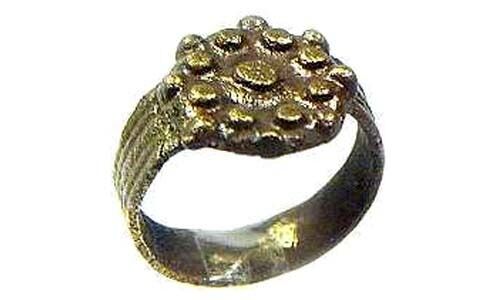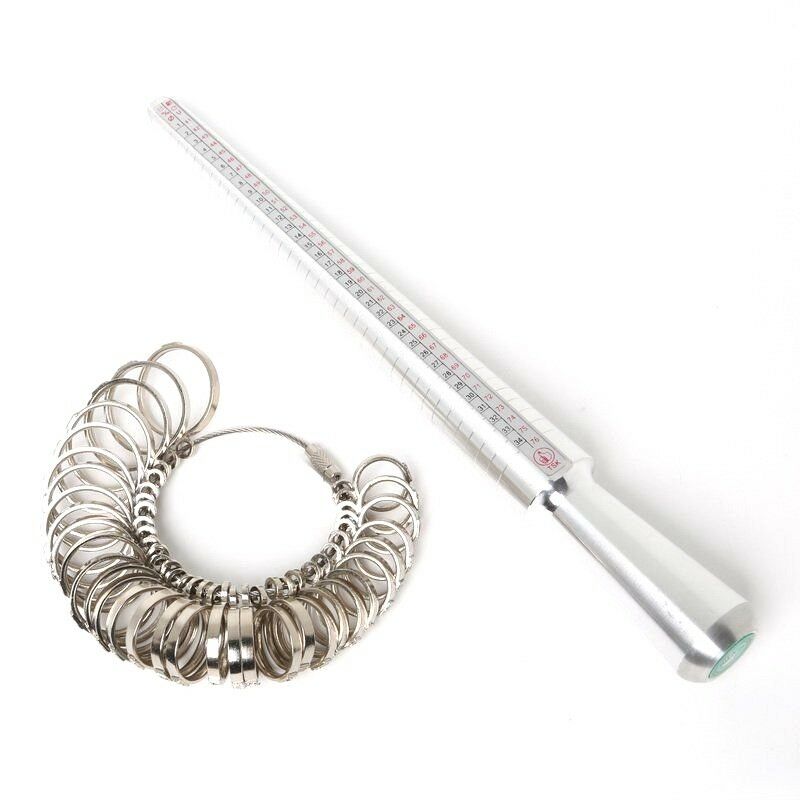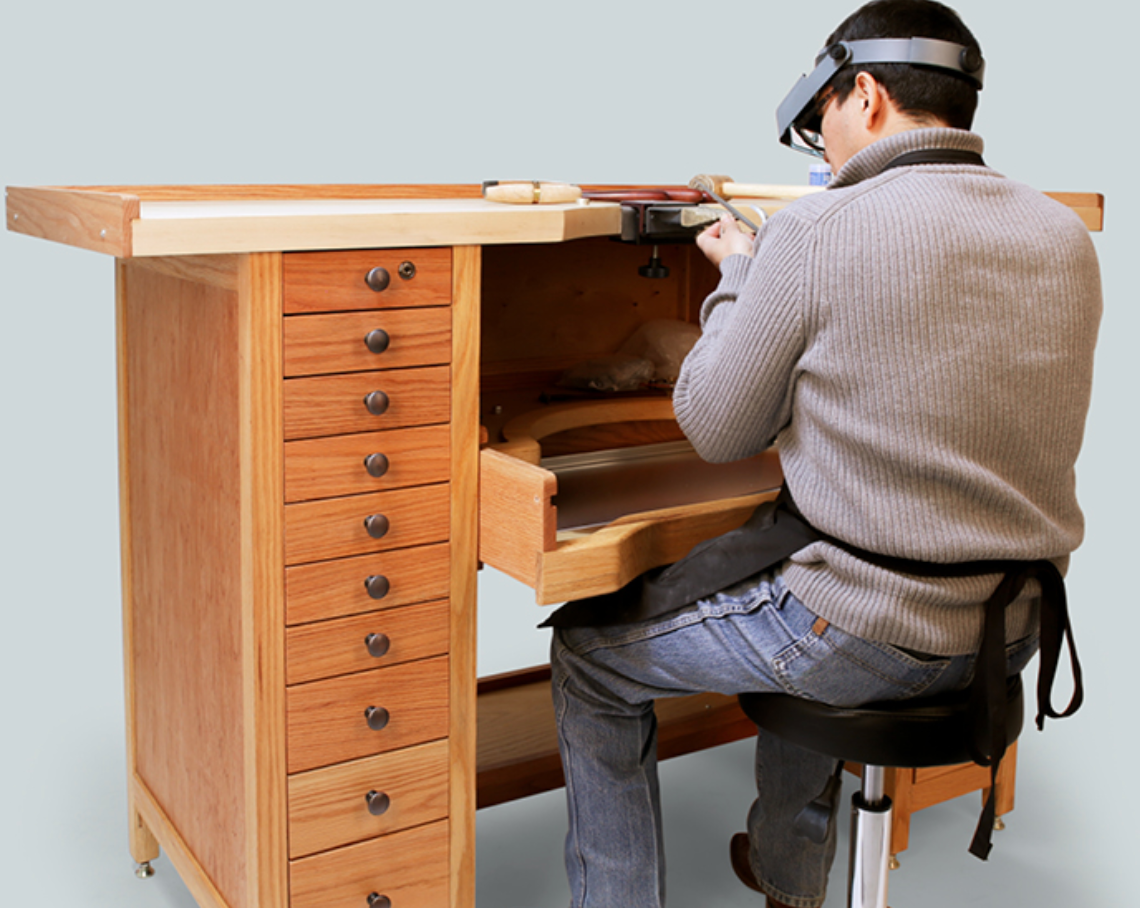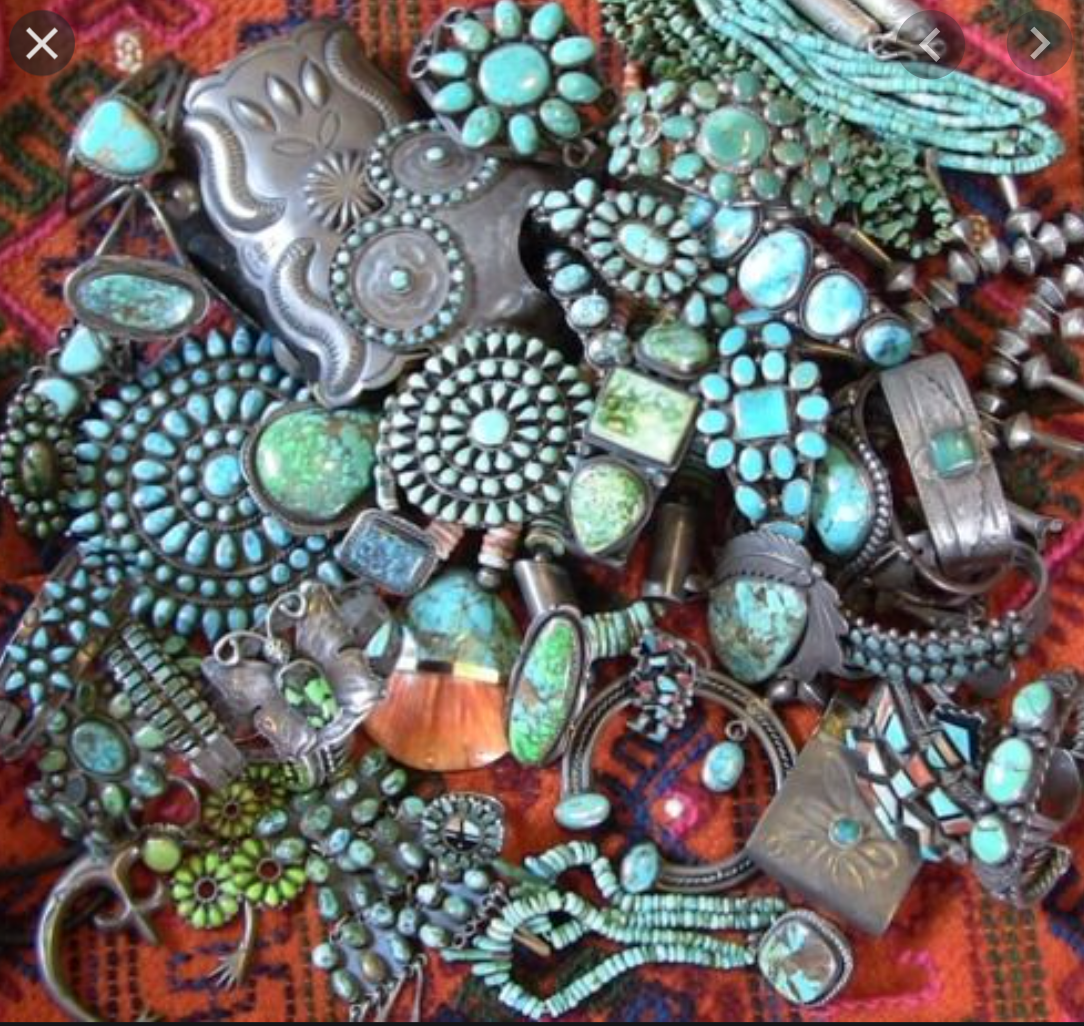-40%
Ancient Roman Byzantine Constantinople Intricate Starburst Ring Pendant AD700
$ 79.19
- Description
- Size Guide
Description
Genuine Ancient Fabulously Intricate Roman/Byzantine Bronze Ring 8th or 9th Century A.D.CLASSIFICATION
: Ancient Byzantine (Eastern Roman Empire) Bronze Ring with “Starburst” Sculpted Bezel and Intricate Stamped Bands. Size 2 1/2 – can be worn as pinkie finger ring or on a chain.
ATTRIBUTION
: Eastern Roman Empire (Constantinople), 6th Century A.D.
SIZE/MEASUREMENTS
: Fits ring size 2 1/2 (U.S.)
Bezel: 11mm (diameter) * 3mm (thickness).
Fixed Width 4 1/2mm Band.
Diameter: 17mm*16mm (outer diameter); 15mm*14mm (inner diameter).
Weight: 2.63 grams.
Chain: Contemporary bronze tone 45 centimeters (18 inches). A wide variety of other chains are available upon request in sizes from 16 to 30 inches, and in metals ranging from gold and silver electroplate to sterling silver and solid 14kt gold. The default chain (absent contrary instructions) is bronze tone, 18 inches. For a more authentic touch, we also have available handcrafted Greek black leather cords.
CONDITION
: Excellent! Completely intact, extremely light wear, little porosity (surface pitting caused by contact with earth while buried). Professionally conserved.
A very well preserved bronze ring circa eighth century A.D. As you can see, the ring is very bold, handsome, and elegant in design. The "bezel", or face of the ring has a “sculpted” starburst design which is composed of two rings of raised dots surrounding the center “star”. This is a very elaborate rendition of a very popular theme. Though the starburst design was very common and seemingly very popular, this ornate depiction of a starburst while not unique, is certainly very exceptional. The bands of the ring are not understated or drab either! As you can see the bands are engraved/stamped with a very intricate design created five raised parallel, again composed of raised dots.
Raised dots was the technique most often employed to emboss, stamp, or engrave small items of jewelry such as this. All of the metal work exhibits very fine workmanship, and is entirely intact – though it is obvious that the ring was worn in life. The wear evidenced is not excessive…but some of the raised dots which comprise the “starburst” are worn a little flat, and there are some very, very slight indications of wear on the bands as well. Of course, the ring was made to be worn…and over one thousand years ago that’s exactly what someone did…they wore it. There is a little surface crazing at two points on the band reflecting soil pressure on the ring while it was buried. The band is
not
cracked through at these points…it is merely surface crazing. Notwithstanding these two slight imperfections, there are no cracks, chips, or other impairments to its integrity.
This ring is simply superbly preserved and restored. The pattern is deeply engraved (or embossed), and the intricate embellishments remain easily discerned and distinct. You have to look very closely to see any of the telltale signs indicating the ring was buried for millennia. Most small artifacts such as this suffer extensive degradation from porosity, which is fine surface pitting caused by prolonged burial in caustic soil. This ring spent well over 1,000 years buried, yet by good fortune there is very little porosity evidenced. It happened to come to rest in very gentle soil conditions. This is an exceptional piece of Roman-Byzantine jewelry, a very handsome artifact, eminently wearable, and even under a jeweler's loop or magnifying glass, there is little discernable degradation due to corrosion, oxidation, porosity, except for very light wear consistent with infrequent usage. It is a quite remarkable artifact.
The ring could easily be worn and enjoyed on a daily basis. The ring does bear the hallmarks of being “mass-produced”. The construction of the ring, as opposed to the modern technique whereby the band and bezel are one piece of metal, is of the more archaic style – the bezel and bands being produced separately and then fastened together. The bands bear an pattern as well - close examination will actually reveal that the bands are actually stamped – which helps date the artifact beyond the fall of the Western Roman Empire. It is an interesting historical relic which pertains not only to the history of Roman Byzantium, but also to the history of jewelry production. The ring is very modern and distinctive in appearance – a classic and timeless design. The ring has a very nice medium bronze tone – unmistakably bronze – but very attractive.
The ring dates to a time when the Western Roman World had collapsed – plunging Western Europe into 1,000 years of darkness. But at the time, yet to confront Islam, the Eastern Roman Empire still flourished as one of the globe’s great powers. Although the ring does bear evidence of being worn during the life of an ancient citizen of Rome, these indications are very light. For all practical purposes, the ring is virtually unused and in almost pristine condition. The Romans were of course very fond of ornate personal jewelry including bracelets worn both on the forearm and upper arm, brooches, pendants, hair pins, earrings intricate fibulae and belt buckles, and of course, rings.
By contemporary standards the ring is on the small side. However the Romans (and Byzantines) were not only smaller in stature than modern day man, they also frequently wore rings on the second joint of their finger rather than the first. So it is not at all unlikely that this ring was worn by an adult. The style to contemporary taste could be comfortable worn today by either a man or a woman. Given the small size of the ring, you might choose to wear it on a chain – though it could also be worn as a pinkie finger ring by a woman of slender build. However if you would like to wear it on a chain, upon request we would be happy to include the bronze-tone chain pictured above. Within a few weeks of being worn it would darken to match the ring quite nicely. This specimen is an exceptional piece of ancient Roman-Byzantine jewelry, a very handsome artifact, and eminently wearable.
BYZANTINE HISTORY
: The Byzantine Empire was the eastern remainder of the great Roman Empire, and stretched from its capital in Constantinople (present-day Istanbul, Turkey) through much of Eastern Europe, Asia Minor, and small portions of North Africa and the Middle East. Prior to the fifth century collapse of the Western Roman Empire, one of Rome’s greatest emperors, Constantine the Great, established a second capital city for the Roman Empire in the East at Byzantium, present day Turkey. Constantine The Great sought to reunite the Roman Empire, centered upon Christian faith, by establishing a second "capital" for the Eastern Roman, away from the pagan influences of the city of Rome. Established as the new capital city for the Eastern Roman Empire in the fourth century, Constantine named the city in his own honor, “Constantinople”.
After the collapse of the Western Roman Empire, the Eastern Roman Empire, the “Byzantine Empire”, lasted for another thousand years as the cultural, religious and economic center of Eastern Europe. At the same time, as a consequence of the fall of the Western Roman Empire, most of the rest of Europe suffered through one thousand years of the "dark ages". As the center of the Byzantine Empire, Constantinople was one of the most elaborate, civilized, and wealthy cities in all of history. The Christian Church eventually became the major political force in the Byzantine Empire. In Byzantine art, God rather than man stood at the center of the universe. Constantine the Great is also credited with being the first Christian Roman Emperor, and was eventually canonized by the Orthodox Church. Christianity had of course been generally outlawed prior to his reign.
Under the Byzantine Empire, Christianity became more than just a faith, it was the theme of the entire empire, its politics, and the very meaning of life. Christianity formed an all-encompassing way of life, and the influence of the Byzantine Empire reached far both in terms of time and geography, certainly a predominant influence in all of Europe up until the Protestant Reformation. In Byzantine art, God rather than man stood at the center of the universe. Representations of Christ, the Virgin, and various saints predominated the coinage of the era. The minting of the coins remained crude however, and collectors today prize Byzantine coins for their extravagant variations; ragged edges, "cupped" coins, etc. Other artifacts such as rings, pendants, and pottery are likewise prized for their characteristically intricate designs.
HISTORY OF BRONZE:
Bronze is the name given to a wide range of alloys of copper, typically mixed in ancient times with zinc, tin, lead, or arsenic. The discovery of bronze enabled people to create metal objects which were better than previously possible. Tools, weapons, armor, and building materials made of bronze were harder and more durable than their stone and copper predecessors from the “Chalcolithic” (the “Copper Age”), i.e., about 7000-3500 B.C., and the Neolithic (“New Stone Age”), i.e. about 12000 to 7000 B.C.). Of particular significance were bronze agricultural implements, tools for cutting stone, and weapons. Culturally significant was bronze statuary, particularly that of the Romans and Greeks. The ancient Greeks and Romans had a long history of making statuary in bronze. Literally thousands of images of gods and heroes, victorious athletes, statesmen, and philosophers filled temples and sanctuaries, and stood in the public areas of major cities. In fact, the Statue of Zeus at Olympia and the Colossus of Rhodes are two of the Seven Wonders of the Ancient World.
Initially bronze was made out of copper and arsenic. It was only later that tin was used, becoming (except in ancient Egypt) the sole type of bronze in the late 3rd millennium B.C. Tin-alloyed bronze was superior to arsenic-alloyed bronze in that the alloying process itself could more easily be controlled, the alloy was stronger and easier to cast, and unlike arsenic, tin is not toxic. Toxicity was a major factor in the production of arsenic bronze. Repeated exposure to arsenic fumes ultimately led to nerve damage in the limbs. Evidence of the long agony of Bronze Age metalsmiths came down to the ancient Greeks and Romans in the form of legend, as the Greek and Roman gods of metalsmiths, Greek Hephaestus and Roman Vulcan, were both lame. In practice historical bronze alloys are highly variable in composition, as most metalworkers probably used whatever scrap was to hand. In one instance of ancient bronze from Britain, analysis showed the bronze to contain a mixture of copper, zinc, tin, lead, nickel, iron, antimony, arsenic, and silver.
Other advantages of bronze over iron include that bronze better resists corrosion, particularly seawater corrosion; bronze resists metal fatigue better than iron; and bronze is a better heat conductor (and thus is better suited for cooking vessels). However ancient bronze, unless conserved properly, is susceptible to “bronze disease”, wherein hydrochloric or hydrosulfuric acid is formed due to impurities (cuprous chloride or sulfur) found within the ancient bronze. Traditionally archaeology has maintained that the earliest bronze was produced by the Maikop, a proto-Indo-European, proto-Celtic culture of Caucasus prehistory around 3500 B.C. Recent evidence however suggests that the smelting of bronze might be as much as several thousand years older (bronze artifacts dating from about 4500 B.C. have been unearthed in Thailand).
Shortly after the emergence of bronze technology in the Caucasus region, bronze technology emerged in ancient Mesopotamia (Sumer), Egypt, the Indus Valley Civilization of Northern India, the Aegean, the Caspian Steppes (Ukraine), the Southern Russia/Central Mongolia Region (the Altai Mountains), the Levant (Eastern Mediterranean), Anatolia (Turkey) and the Iranian Plateau. By the late third millennium B.C. many Western European Bronze Age Cultures had emerged. Some of the more notable were the Celtic cultures of Middle Europe stretching from Hungary to Poland and Germany, including the Urnfield, Lusatian, and (Iron Age Transitional) Hallstatt Cultures. The Shang in ancient China also developed a significant Bronze Age culture, noted for large bronze burial urns. The ancient Chinese were the first to cast bronze (using the “lost wax” technique) about 2200 B.C. Prior to that time all bronze items were forged. Though weapons and utilitarian items were produced in great numbers, the production of bronze in ancient China was especially noteworthy for ornamented ritualistic/religious vessels (urns, wine vessels, water pots, food containers, and musical instruments), many of immense size.
Britain’s Bronze Age cultures included the Beaker, Wessex, Deverl, and Rimbury. Copper and tin ores are rarely found together, so the production of bronze has always involved trade. Cornwall was one of the most significant sources of tin not only for Britain, but exported throughout the Mediterranean. Other significant suppliers of tine were the Taurus Mountains of Anatolia (Turkey), as well as Spain. Enormous amounts of copper was produced from the Great Orme mine in North Wales, the island of Cyprus, the European Alps, and from the Sinai Peninsula and other nearby sites in the Levant. Though much of the raw minerals may have come from Britain, Spain, Anatolia, and the Sinai, it was the Aegean world which controlled the trade in bronze. The great seafaring Minoan Empire (about 2700 to 1450 B.C.) appears to have controlled, coordinated, and defended the trade.
Tin and charcoal were imported into Cyprus, where locally mined copper was mined and alloyed with the tin from Britain. Indicative of the seafaring trade in the Eastern Mediterranean, a shipwreck from about 1300 B.C. off the Turkish coast revealed a ship carrying a ton of copper ingots, several dozen small tin ingots, new bronze tools, scrap metal, and a blacksmith's forge and tools (along with luxury trade goods from Africa). It appears that the Bronze Age collapsed with the fall of Minoan Empire, to be replaced by a Dark Age and the eventual rise of the Iron Age Myceneans (on mainland Greece). Evidence suggests that the precipitating event might have been the eruption of Thera (Santorini) and the ensuing tsunami, which was only about 40 miles north of Crete, the capital of the Minoan empire.
Some archaeologists argue that it was Santorini itself which was the capitol city of the Minoan World. However where Crete or Santorini, it is known that the bread-basket of the Minoan trading empire, the area north of the Black Sea lost population, and thereafter many Minoan colony/client-states lost large populations to extreme famines or pestilence. Inasmuch as the Minoans were the principals of the tin/copper shipping network throughout the Mediterranean, the Bronze Age trade network is believed to have failed. The end of the Bronze Age and the rise of the Iron Age is normally associated with the disturbances created by large population disruptions in the 12th century B.C. The end of the Bronze Age saw the emergence of new technologies and civilizations which included the large-scale production of iron (and limited scale production of steel).
Although iron was in many respects much inferior to bronze (and steel was inefficiently produced in very limited quantities), iron had the advantage that it could be produced using local resources during the dark ages that followed the Minoan collapse, and was very inexpensive when compared to the cost of producing bronze. Bronze was still a superior metal, resisting both corrosion and metal fatigue better than iron. And bronze was still used during the Iron Age, but for many purposes the weaker iron was sufficiently strong to serve in its place. As an example, Roman officers were equipped with bronze swords while foot soldiers had to make do with iron blades.
Pliny the Elder, the famous first century Roman historian and naturalist, wrote about the reuse of scrap bronze and copper in Roman foundries, noting that the metals were recast as armor, weapons or articles for personal use, such as bronze mirrors. The melting and recasting foundries were located at the Italian port city of Brindisi. Located on the Adriatic coast, Brindisi was the terminus of the great Appian Way, the Roman road constructed to facilitate trade and military access throughout the Italian part of the Roman Empire. The city was the gateway for Roman penetration into the eastern parts of her empire (Greece, the Eastern Mediterranean, the Black Sea Region, the Danubian Provinces, and eventually Mesopotamia).
Domestic shipping (insured first class mail) is included in the price shown. Domestic shipping also
includes
USPS Delivery Confirmation (you might be able to update the status of your shipment on-line at the
USPS Web Site
). Canadian shipments are an extra .99 for Insured Air Mail; International shipments are an extra .99 for Air Mail (and generally are NOT tracked; trackable shipments are EXTRA).
ADDITIONAL PURCHASES
do receive a
VERY LARGE
discount, typically about per item so as to reward you for the economies of combined shipping/insurance costs. Your purchase will ordinarily be shipped within 48 hours of payment. We package as well as anyone in the business, with lots of protective padding and containers.
We do NOT recommend uninsured shipments, and expressly disclaim any responsibility for the loss of an uninsured shipment. Unfortunately the contents of parcels are easily “lost” or misdelivered by postal employees – even in the USA. If you intend to pay via PayPal, please be aware that PayPal Protection Policies REQUIRE insured, trackable shipments, which is INCLUDED in our price. International tracking is at additional cost. We do offer U.S. Postal Service Priority Mail, Registered Mail, and Express Mail for both international and domestic shipments, as well United Parcel Service (UPS) and Federal Express (Fed-Ex). Please ask for a rate quotation. We will accept whatever payment method you are most comfortable with. If upon receipt of the item you are disappointed for any reason whatever, I offer a no questions asked return policy. Send it back, I will give you a complete refund of the purchase price (less our original shipping costs).
Most of the items I offer come from the collection of a family friend who was active in the field of Archaeology for over forty years. However many of the items also come from purchases I make in Eastern Europe, India, and from the Levant (Eastern Mediterranean/Near East) from various institutions and dealers. Though I have always had an interest in archaeology, my own academic background was in sociology and cultural anthropology. After my retirement however, I found myself drawn to archaeology as well. Aside from my own personal collection, I have made extensive and frequent additions of my own via purchases on Ebay (of course), as well as many purchases from both dealers and institutions throughout the world – but especially in the Near East and in Eastern Europe. I spend over half of my year out of the United States, and have spent much of my life either in India or Eastern Europe. In fact much of what we generate on Yahoo, Amazon and Ebay goes to support The Hermitage Museum in St. Petersburg, as well as some other worthy institutions in Europe connected with Anthropology and Archaeology.
I acquire some small but interesting collections overseas from time-to-time, and have as well some duplicate items within my own collection which I occasionally decide to part with. Though I have a collection of ancient coins numbering in the tens of thousands, my primary interest is in ancient jewelry. My wife also is an active participant in the “business” of antique and ancient jewelry, and is from Russia. I would be happy to provide you with a certificate/guarantee of authenticity for any item you purchase from me. There is a fee for mailing under separate cover. Whenever I am overseas I have made arrangements for purchases to be shipped out via domestic mail. If I am in the field, you may have to wait for a week or two for a COA to arrive via international air mail. But you can be sure your purchase will arrive properly packaged and promptly – even if I am absent. And when I am in a remote field location with merely a notebook computer, at times I am not able to access my email for a day or two, so be patient, I will always respond to every email. Please see our
"ADDITIONAL TERMS OF SALE."
TRANSLATE
Arabic
Chinese
French
German
Greek
Indonesian
Italian
Hindi
Japanese
Korean
Swedish
Portuguese
Russian
Spanish







